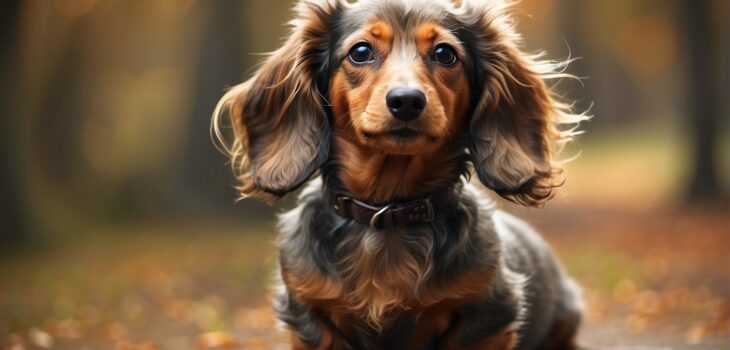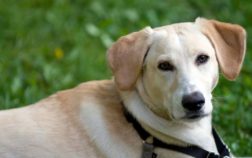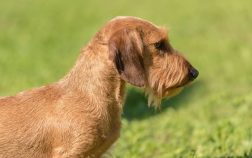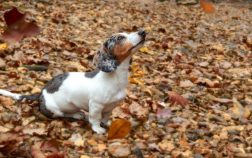If you’ve ever wondered how to properly groom a long-haired Dachshund, we’ve got you covered. In this article, we’ll provide you with helpful tips and techniques to ensure your furry friend’s coat remains healthy and beautiful. Plus, we’ll address the common question of whether or not it’s appropriate to shave a long-haired Dachshund. So, let’s dive into the world of grooming and discover the best practices to keep your long-haired Dachshund looking their best!
Understanding the Long Haired Dachshund’s Coat
The long-haired Dachshund is a beautiful breed known for its elegant and flowing coat. Their luxurious locks require proper care and maintenance to keep them looking their best. In this article, we will explore the characteristics of a long-haired Dachshund’s coat, how it grows and sheds, and provide you with a comprehensive guide on how to groom your furry friend.
Characteristics of a Long Haired Dachshund’s Coat
A long-haired Dachshund’s coat is characterized by its soft, silky, and shiny fur that forms feathering along their ears, chest, belly, and tail. This breed has longer hair compared to their smooth and wire-haired counterparts. The coat is double-layered, with a dense undercoat providing insulation and a longer topcoat that gives them their distinctive look.
How the Coat Grows and Sheds
The long-haired Dachshund’s coat grows steadily throughout the year, and unlike some breeds, they don’t have a heavy shedding season. However, regular grooming is essential to prevent matting and tangling of the fur. While shedding may be minimal, some hairs will still fall out naturally, so brushing is crucial to remove any loose hairs and keep the coat looking its best.

Pre-Grooming Preparation
Before diving into the grooming process, it’s important to gather all the necessary tools, choose a suitable grooming area, and prepare your Dachshund for the grooming session.
Gather Necessary Grooming Tools
To ensure a successful grooming session, gather the following grooming tools:
- A slicker brush or a pin brush suitable for long-haired breeds
- A comb with wide and narrow teeth for detangling and removing mats
- Scissors with rounded tips for trimming and shaping the coat
- A pet-safe shampoo and conditioner specifically designed for long-haired dogs
- Towels for drying
- A hairdryer with adjustable temperature settings
- Nail clippers or a grinder for regular nail trims
- Styptic powder or cornstarch to stop bleeding if you accidentally cut the nails too short
- Cotton balls and an ear-cleaning solution for ear care
- A toothbrush and dog-friendly toothpaste for dental hygiene
Choose a Suitable Grooming Area
Select a grooming area that is comfortable for both you and your Dachshund. Ideally, this should be a quiet and well-lit space with easy access to water. You may consider using a non-slip mat or a grooming table to ensure stability during the grooming process.
Prepare the Dachshund for Grooming
Before you start grooming, help your Dachshund relax and get accustomed to the process. Give them plenty of praise and rewards, and make sure they are calm and comfortable. It’s also a good idea to take them for a short walk or play session beforehand to release any excess energy.

Brushing Your Long Haired Dachshund
Regular brushing is vital to keep your long-haired Dachshund’s coat healthy and free from mats and tangles. Here’s how to brush your furry friend properly.
Selecting the Right Grooming Brush
When it comes to brushing a long-haired Dachshund, a slicker brush or a pin brush with soft bristles is highly recommended. These brushes are designed to remove loose hairs and prevent matting without causing discomfort to your pup. If your Dachshund has particularly sensitive skin, opt for a brush with rubber or plastic bristles to minimize irritation.
Brush with Gentle Strokes
Start by gently brushing your Dachshund’s coat in the direction of hair growth. Take your time and use gentle strokes to remove any loose hairs and stimulate the skin and hair follicles. Remember to be patient and avoid pulling or tugging on any knots or mats.
Focus on Tangle-Prone Areas
Long-haired Dachshunds have certain areas that are more prone to tangling and matting, such as behind their ears, around the collar, and under their armpits. Take extra care when brushing these areas, using the appropriate comb to gently detangle any knots. It’s essential to be gentle and never forcefully yank on the hair, as this can cause discomfort and skin irritation.
Tackling Mats and Tangles
If you encounter mats or tangles that cannot be easily untangled, it may be necessary to remove them with scissors. Hold the mat close to the skin and carefully cut through the mat, taking care not to cut the skin. However, if the mat is too close to the skin or you are unsure how to handle it, it’s best to seek professional help to prevent any accidental injuries.
Bathing and Drying Techniques
Regular baths are essential to keep your long-haired Dachshund’s coat clean and smelling fresh. Here’s how to properly bathe and dry your furry friend.
Choosing the Right Shampoo
When selecting a shampoo for your long-haired Dachshund, opt for a dog-specific and hypoallergenic formula. Avoid using human shampoos, as they may contain harsh ingredients that can irritate your pup’s skin. If your Dachshund has any specific skin conditions or allergies, consult with your veterinarian to determine the most suitable shampoo for their needs.
Wet the Coat Thoroughly
Before applying shampoo, thoroughly wet your Dachshund’s coat with lukewarm water. Make sure the water reaches the skin to ensure a thorough cleaning. Use a spray nozzle or a cup to gently wet their body and avoid getting water in their eyes and ears.
Applying Shampoo and Massaging
Squeeze a small amount of shampoo onto your hands and gently work it into your Dachshund’s coat, starting from their neck and moving towards their tail. Be careful to avoid the eyes, ears, and mouth. Use your fingertips to massage the shampoo into the coat, creating a rich lather that reaches the skin.
Rinsing Off the Shampoo
Thoroughly rinse your Dachshund’s coat with warm water, making sure to remove all traces of shampoo. Residual shampoo can cause skin irritation, so take your time to ensure a thorough rinse. Pay special attention to hard-to-reach areas, such as under the belly and between the legs.
Towel Drying the Dachshund
Once your Dachshund is fully rinsed, gently wrap them in a towel and pat dry their coat. Avoid vigorously rubbing the coat, as this can tangle or damage the hair. Give them a gentle squeeze to remove excess water and then proceed to the drying process.
Using a Hairdryer Properly
When using a hairdryer, set it to a low or cool temperature to avoid overheating your Dachshund’s sensitive skin. Hold the dryer at a safe distance from the coat and use your free hand to gently brush the fur in the direction of hair growth. This will help to prevent tangles and encourage a smooth and shiny finish. Be patient and take breaks if your Dachshund shows signs of discomfort or anxiety.
Trimming and Clipping the Coat
Trimming and clipping your Dachshund’s coat is an essential part of the grooming process. Here’s how to achieve a well-maintained and aesthetically pleasing look.
Deciding on the Desired Length
Before trimming, decide on the desired length for your Dachshund’s coat. Long-haired Dachshunds typically have shorter hair on their body and longer hair on their ears, chest, belly, and tail. It’s important to have a clear vision in mind to ensure consistency and avoid any accidental mishaps.
Using Scissors vs. Clippers
When it comes to trimming and clipping, you can choose between using scissors or clippers. Scissors are more precise and allow for more control, making them a good choice for shaping specific areas, such as the ears and tail. Clippers, on the other hand, are faster and more efficient for large areas. Use professional-grade clippers with appropriate attachments to achieve the desired length.
Trimming the Body and Sides
Start by trimming the body and sides of your Dachshund’s coat. Use your scissors or clippers, depending on your preference, and work in the direction of hair growth. Maintain even pressure and take breaks to allow your Dachshund to rest if needed. Keep in mind the desired length and trim gradually to avoid cutting too much hair at once.
Attention to Ears, Tail, and Paws
The ears, tail, and paws of a long-haired Dachshund require special attention when it comes to trimming. Use scissors to carefully shape the hair around the ears, making sure not to cut into the skin. For the tail, brush it out gently and trim any excess length to maintain a neat appearance. When it comes to the paws, trim the hair between the paw pads to prevent matting and improve traction.
Trimming Face and Beard
To trim the hair on the face and beard, use scissors and exercise caution. Comb out the fur and trim it gradually, ensuring you maintain the natural shape of your Dachshund’s face. Be mindful of the area around the eyes and mouth, as these are sensitive areas that require extra care.
Ensuring Safety and Caution
When trimming your Dachshund’s coat, always prioritize safety and caution. If you are new to trimming or feel unsure about a specific area, it’s best to seek professional help. Accidents can happen, so take your time and be extra vigilant to prevent any injuries to your furry friend.
Eyes, Ears, and Dental Care
In addition to grooming the coat, it’s crucial to care for your Dachshund’s eyes, ears, and teeth to maintain their overall health and well-being.
Cleaning and Caring for the Eyes
Your Dachshund’s eyes require regular cleaning to prevent tear stains and irritation. Use a clean cloth or a soft cotton ball moistened with warm water to gently wipe away any discharge or debris. Avoid using harsh chemicals or soaps near the eyes, as they can cause irritation. If you notice any persistent redness, inflammation, or discharge, consult with your veterinarian for further evaluation.
Checking and Cleaning the Ears
Long-haired Dachshunds are prone to ear infections and wax buildup. Regularly check their ears for any signs of redness, swelling, or discharge. If you notice anything unusual, consult with your veterinarian. To clean the ears, use a pet-specific ear cleaner and a cotton ball. Gently wipe the visible part of the ear, being careful not to insert anything into the ear canal.
Maintaining Proper Dental Hygiene
Dental hygiene is essential for your Dachshund’s overall health. Aim to brush their teeth at least two to three times a week using a dog-friendly toothbrush and toothpaste. Start with a slow introduction to the toothbrush and gradually increase the duration of brushing. Regular dental check-ups with your veterinarian are also recommended to ensure optimal oral health for your furry friend.
Nail Trimming and Paw Care
Proper nail trimming and paw care are essential to keep your Dachshund comfortable and prevent any potential issues.
Importance of Regular Nail Trimming
Regularly trimming your Dachshund’s nails is crucial to maintain their comfort and prevent issues such as ingrown nails or overgrown nails that affect their gait. Long nails can also cause discomfort or lead to injuries when they snag on surfaces. Aim to trim your Dachshund’s nails every 2-4 weeks, depending on their growth rate and activity level.
Using Appropriate Tools
Use nail clippers or a grinder specifically designed for dogs. Ensure the tools are sharp and in good condition to prevent any crushing or splitting of the nails. If you’re unsure about nail trimming or have concerns, consult with a professional groomer or your veterinarian for guidance.
Trimming Techniques and Safety
When trimming your Dachshund’s nails, take it slow and be cautious. Hold their paw gently but firmly and identify the quick, the pink part of the nail that contains blood vessels. Avoid cutting into the quick, as it can cause bleeding and pain. Trim a small amount at a time, giving treats and praise to keep your Dachshund calm and reward their cooperation.
Checking and Caring for Paws
Regularly check your Dachshund’s paws for any cuts, abrasions, or foreign objects. Remove any debris or dirt that may have accumulated between the paw pads. If your Dachshund’s paws seem excessively dry or cracked, you can apply a pet-safe paw balm or moisturizer to keep their paws healthy and hydrated.
Dealing with Shedding
While long-haired Dachshunds don’t have a heavy shedding season like some breeds, regular brushing is still necessary to manage shedding and prevent matting. Here are some tips for dealing with shedding.
Understanding the Shedding Season
Long-haired Dachshunds typically shed minimally throughout the year, but there may be slight variations in shedding depending on their overall health, diet, and environmental factors. Keep an eye out for excessive shedding, which could indicate an underlying issue that requires attention.
Managing Shedding with Regular Brushing
Regular brushing is crucial to manage shedding in long-haired Dachshunds. Brushing helps to remove loose hairs, distribute natural oils, and prevent tangling. Aim to brush your Dachshund at least once or twice a week to maintain a healthy coat. This will also minimize the amount of hair your Dachshund sheds around the house.
Using Shedding Tools and Supplements
In addition to regular brushing, you can use shedding tools, such as de-shedding brushes or grooming gloves, to further reduce shedding. These tools are designed to remove loose hair effectively without damaging the coat. Additionally, certain dietary supplements, such as omega-3 fatty acids, can promote a healthy coat and reduce shedding. Consult with your veterinarian to determine the most appropriate supplements for your Dachshund.
Seeking Professional Help if Needed
If your Dachshund’s shedding becomes excessive or you’re having difficulty managing their coat, don’t hesitate to seek professional help. A professional groomer or a veterinarian can provide guidance, recommend specialized treatments, or perform a thorough grooming session to address any shedding concerns.
Maintaining a Healthy Diet
A nutritious diet plays a vital role in maintaining your Dachshund’s overall health, including the condition of their coat. Here are some tips for ensuring a healthy diet for your long-haired Dachshund.
Choosing Nutritious Food Options
Select a high-quality dog food that is specifically formulated for your Dachshund’s age, size, and activity level. Look for options that include lean proteins, healthy fats, and essential vitamins and minerals. Consult with your veterinarian to determine the most suitable diet for your Dachshund, as individual dietary needs may vary.
Consulting with a Veterinarian
Regular visits to your veterinarian are crucial to monitor your Dachshund’s health and address any nutritional concerns. Your veterinarian can provide guidance on dietary requirements, recommend appropriate supplements if needed, and monitor your Dachshund’s overall well-being.
Avoiding Excessive Weight Gain
Maintaining a healthy weight is important for your Dachshund’s overall health and coat condition. Long-haired Dachshunds are prone to weight gain, which can lead to various health issues and affect the quality of their fur. Ensure proper portion control, provide regular exercise, and avoid overfeeding to prevent excessive weight gain.
Professional Grooming Services
While regular at-home grooming is essential for your long-haired Dachshund, there are certain benefits to seeking professional grooming services. Here’s what you need to know.
Benefits of Professional Grooming
Professional groomers have the experience, expertise, and specialized tools to groom your Dachshund effectively and efficiently. They can provide services such as breed-specific cuts, dematting, and more. Professional grooming sessions also often include additional services such as nail trims, ear cleaning, and teeth brushing, ensuring your Dachshund receives a well-rounded grooming experience.
Finding a Reputable Groomer
When choosing a professional groomer, do your research to find one with a good reputation and positive reviews. Ask for recommendations from fellow Dachshund owners, friends, or your veterinarian. Visit the grooming salon beforehand to ensure it is clean, well-maintained, and equipped with the necessary facilities to cater to your Dachshund’s needs.
Knowing When to Seek Professional Help
If you feel overwhelmed or unsure about any aspect of grooming your long-haired Dachshund, it’s perfectly okay to seek professional help. A professional groomer can provide guidance, address any grooming challenges, and ensure your Dachshund’s coat is in optimal condition. They can also offer valuable advice on at-home maintenance and grooming techniques to help you care for your furry friend more effectively.
In conclusion, understanding and caring for your long-haired Dachshund’s coat is essential to ensure their well-being and maintain their distinctive beauty. By following the tips and techniques outlined in this article, you can groom your Dachshund with confidence, keeping their coat healthy, shiny, and mat-free. Remember, regular grooming is not only a necessity but also an opportunity to bond with your furry friend and show them some extra love and care.




